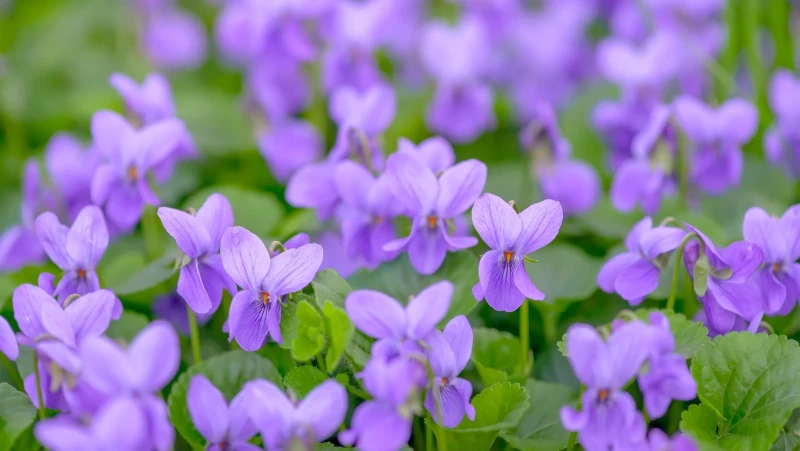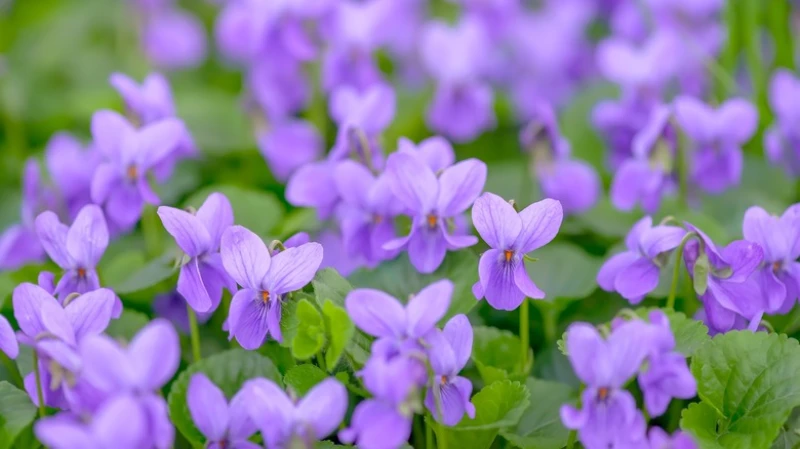Wild violets, often seen as weeds, share similarities with carefully nurtured indoor plants like African violets. The vibrant blooms of wild violets create a stunning green and purple carpet in the spring, offering benefits such as providing essential nectar and filling in bare spots where grass struggles to grow.
Early nectar for pollinators
Perhaps the most important job wild violets do in the home landscape is provide nectar for bees, butterflies, and other pollinators that have limited sources of food early in the season. As the various types of insects emerge from their winter slumber underground and in leaf piles, they need nectar, but there aren't many blooms this early in the year. Those early-blooming "weeds" can be the difference between starting a pollinator garden and creating a sterile environment that does not support beneficial insects.
This humble "weed" also provides the only source of food for the larvae of 14 species of greater fritillary butterflies and 16 lesser fritillaries, per the Xerces Society. Among these lovely insects is the Diana fritillary, the state butterfly of Arkansas. By allowing this plant to thrive in your outdoor space, you can create a butterfly oasis that benefits both larvae and adult butterflies.
In the realm of early-season blooms, wild violets stand out as a low-maintenance option. Embracing the title of "no maintenance," these resilient plants flourish without much intervention. Thriving in poor soil conditions, they eschew the need for fertilization and transplanting, effortlessly spreading on their own. When traditional grass struggles to take root, wild violets can fill the void with ease.
Known for their drought tolerance, wild violets eliminate the need for watering, making them a cost-effective and time-saving choice for lawn cover. Even in times of extreme dry spells, the heart-shaped leaves may wither temporarily, but a rainfall rejuvenates them swiftly, showcasing their resilience. These plants are a perfect fit for no-mow lawns, offering a lush and vibrant appearance without the hassle of constant maintenance.
Wild violets, with their ability to thrive in various light conditions, can be a charming addition to lawns that don't require mowing. If the thought of constantly maneuvering a heavy lawnmower under the scorching sun during summer doesn't appeal to you, transitioning to a no-mow lawn might be worth considering. While wild violets tend to remain shorter in shady spots, they can still serve as a low-lying ground cover in any area and will grow taller when exposed to full sunlight.
The beauty of natural lawns, aside from the freedom from mowing, lies in the fact that the mix of native plants fosters a mini ecosystem that is beneficial for both soil health and pollinators. Alongside wild violets, incorporating white clover, creeping thyme, or other suitable plants for your region can help create a gorgeous and eco-friendly outdoor space. However, transitioning from traditional turf grass to a no-mow lawn is a process that requires patience as it may take some time to complete the transformation.
Embrace the latest gardening trend by incorporating wild violets into your yard. These versatile plants are not only ornamental but also edible, making them a valuable addition to your garden. Forget about high-maintenance crops - wild violets require no special care and can be easily incorporated into your meals.
To enjoy the benefits of wild violets, simply harvest their young leaves and add them to salads for a fresh and tasty twist. You can also chop the leaves and use them in soups or sauté them as a nutritious side dish. For a more elegant presentation, consider garnishing your dishes with edible violet blooms or freezing them to enhance your beverages.
In addition to their culinary uses, wild violets are packed with health benefits. Rich in vitamins A and C, these "weeds" offer anti-inflammatory and antioxidant properties that can boost your overall well-being. Just remember, while wild violets are safe to eat, the common African violet houseplant is not edible.








